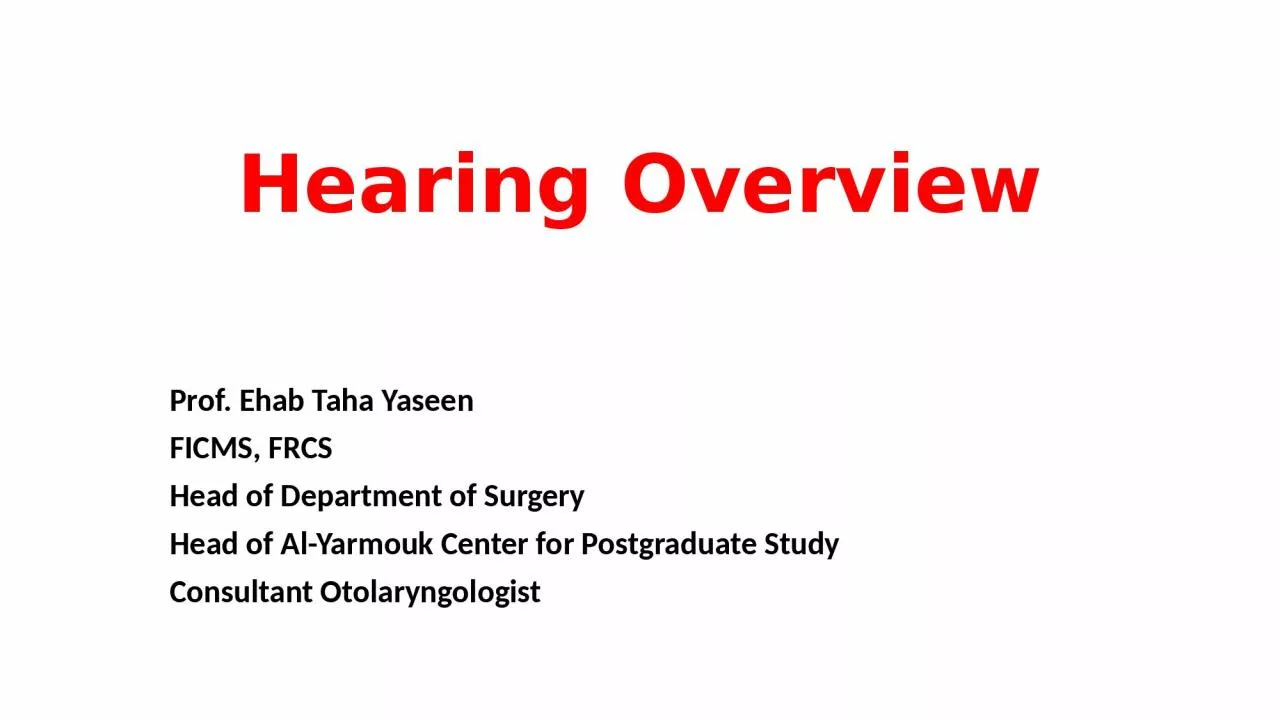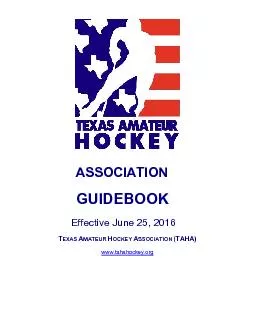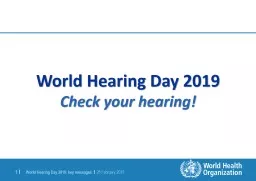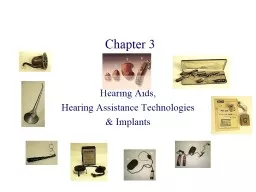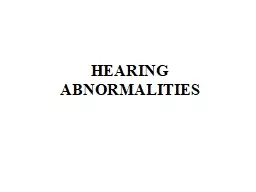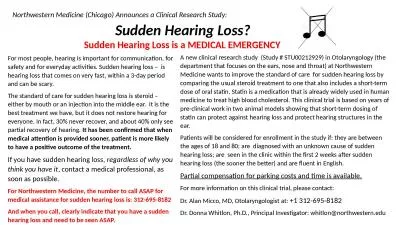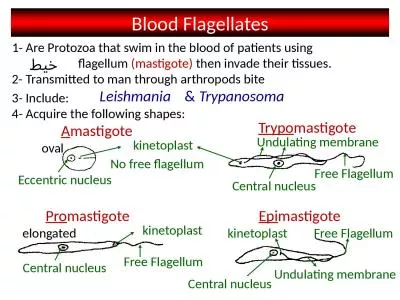PPT-Hearing Overview Prof. Ehab Taha Yaseen
Author : rosemary | Published Date : 2024-01-03
FICMS FRCS Head of Department of Surgery Head of AlYarmouk Center for Postgraduate Study Consultant Otolaryngologist Agenda I will discuss the following points Epidemiology
Presentation Embed Code
Download Presentation
Download Presentation The PPT/PDF document "Hearing Overview Prof. Ehab Taha Yaseen" is the property of its rightful owner. Permission is granted to download and print the materials on this website for personal, non-commercial use only, and to display it on your personal computer provided you do not modify the materials and that you retain all copyright notices contained in the materials. By downloading content from our website, you accept the terms of this agreement.
Hearing Overview Prof. Ehab Taha Yaseen: Transcript
Download Rules Of Document
"Hearing Overview Prof. Ehab Taha Yaseen"The content belongs to its owner. You may download and print it for personal use, without modification, and keep all copyright notices. By downloading, you agree to these terms.
Related Documents

